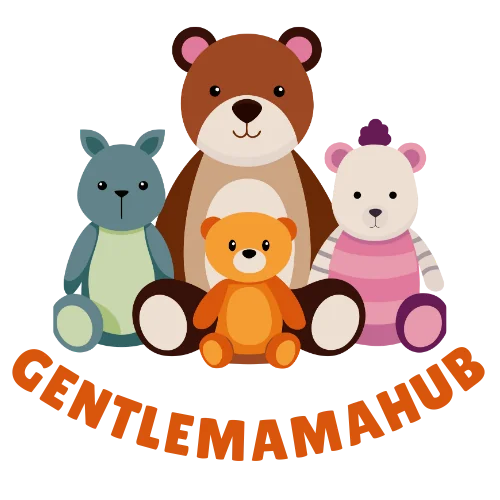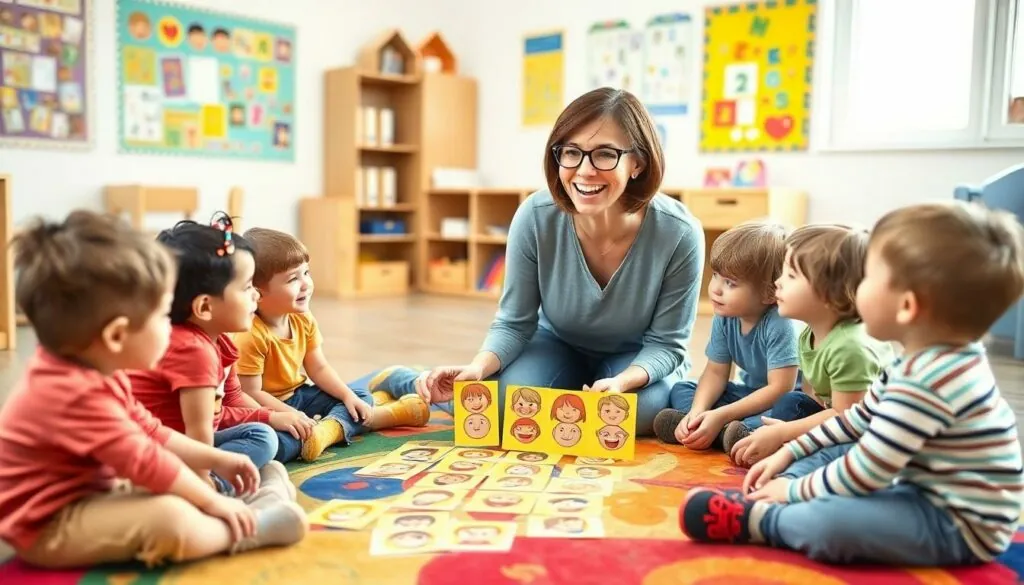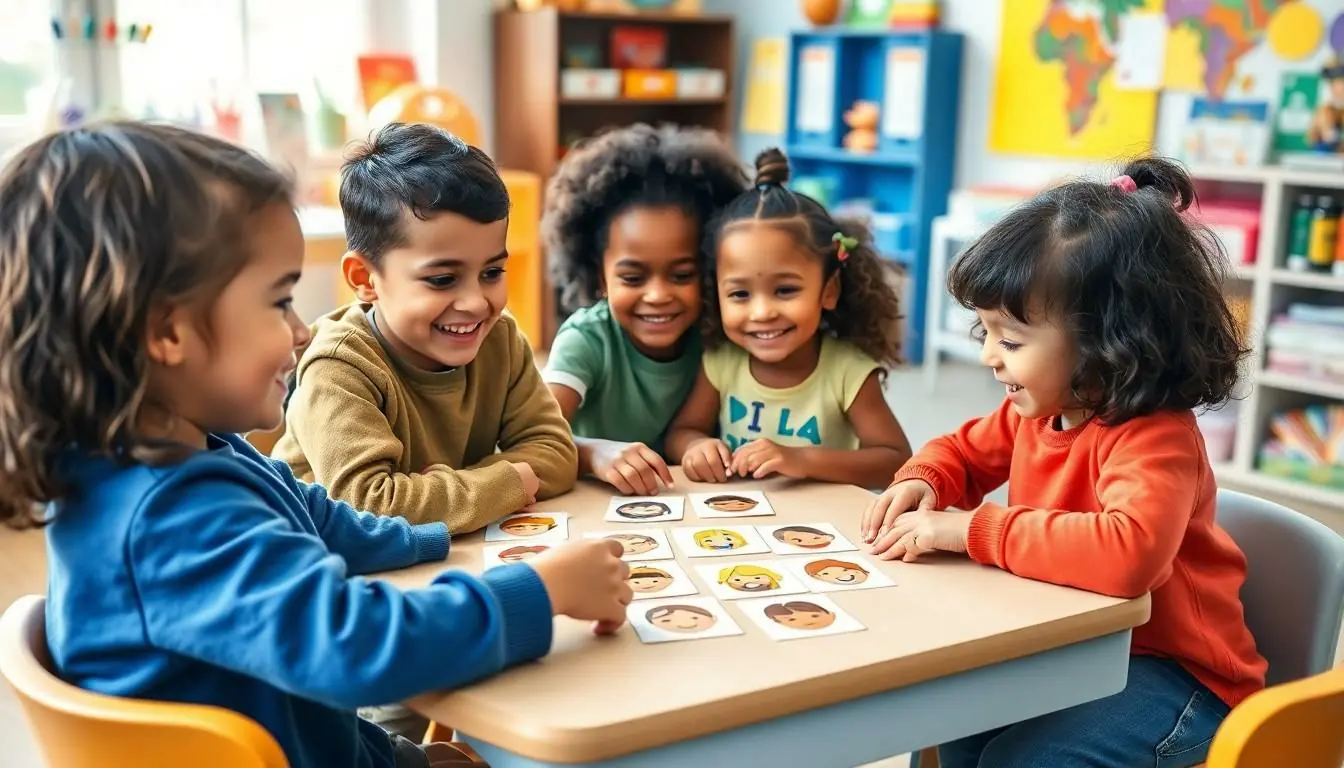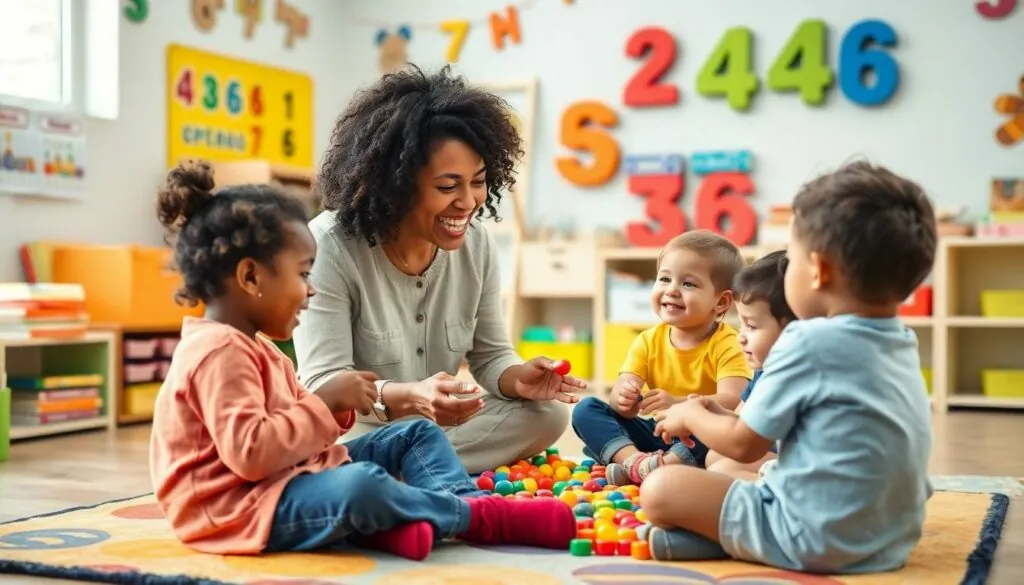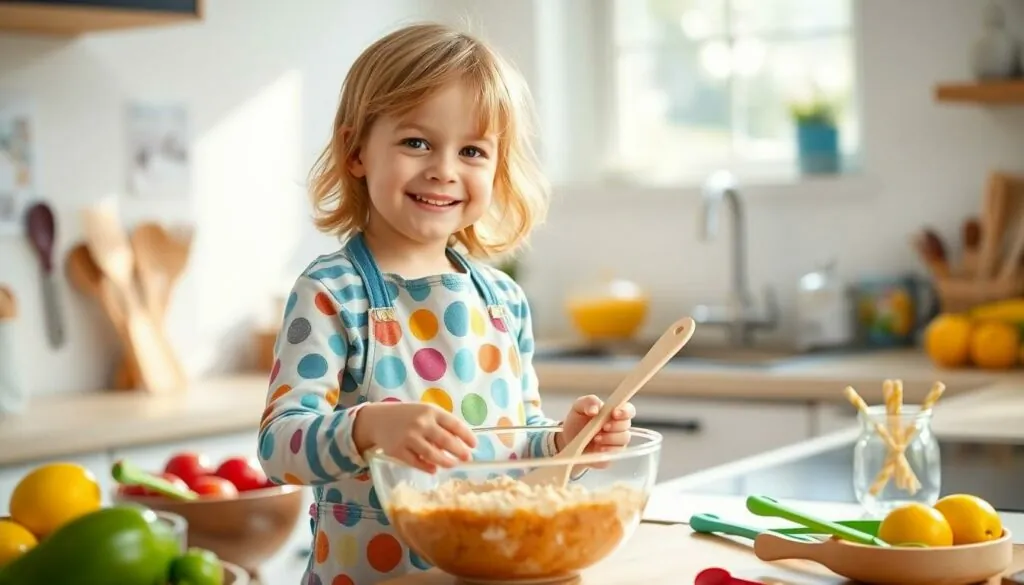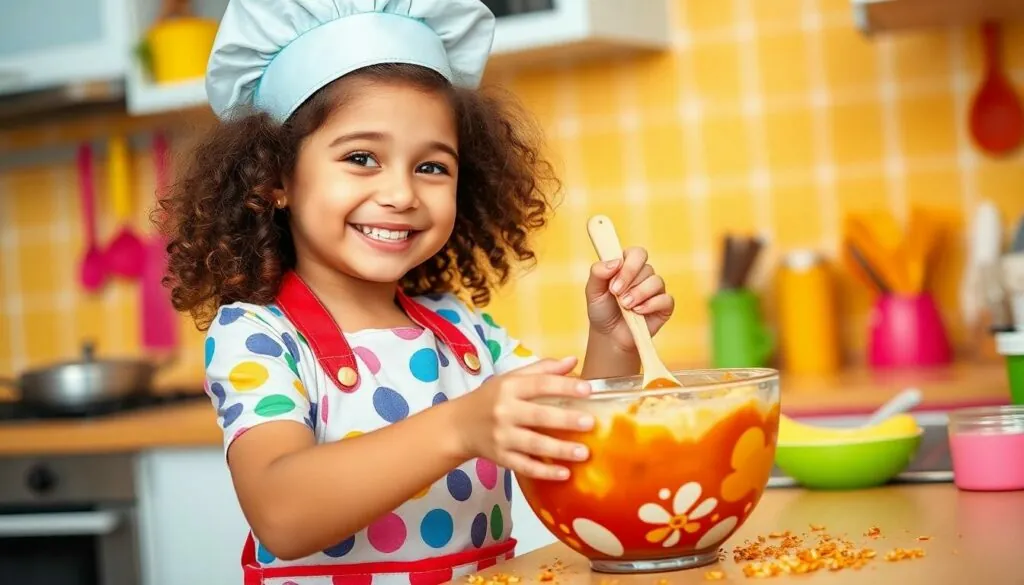Table of Contents
ToggleTeaching little ones about emotions doesn’t have to feel like herding cats! Printable emotions activities offer an engaging way for preschoolers to explore and understand their feelings while having fun. These educational tools help young children develop crucial emotional intelligence skills they’ll need throughout their lives.
From colorful emotion wheels to expressive face matching games these printable activities transform abstract concepts into tangible learning experiences. Parents and teachers love them because they’re convenient cost-effective and can be used repeatedly for different learning scenarios. Whether it’s identifying happy sad angry or surprised faces children learn to recognize and name their emotions through playful interaction.
Best of all most of these activities require minimal prep – just print cut and watch the emotional learning unfold. They’re perfect for circle time individual play or even those moments when little ones need help processing big feelings.
Understanding Emotions in Early Childhood Development
Emotional development forms a critical foundation during the preschool years, ages 3-5. Research shows that children who learn to identify emotions early demonstrate enhanced social skills later in life.
Why Teaching Emotions Matters for Preschoolers
Teaching emotions helps preschoolers develop essential life skills for social interactions and self-regulation. Children with strong emotional awareness show improved problem-solving abilities in social situations. Studies indicate that emotionally intelligent preschoolers experience:
- Better peer relationships through increased empathy
- Reduced behavioral challenges in classroom settings
- Enhanced communication with family members
- Improved academic performance in later years
- Greater success in conflict resolution
Key Emotional Skills for Ages 3-5
Preschoolers develop specific emotional competencies that shape their social interactions. Research from child development experts identifies these core emotional skills:
| Age | Key Emotional Milestones |
|---|---|
| 3 years | Recognizes happy, sad, angry emotions |
| 4 years | Names complex feelings like frustrated, scared |
| 5 years | Shows early empathy, understands others’ perspectives |
- Identifying basic emotions in themselves
- Recognizing facial expressions in others
- Expressing feelings using words
- Managing emotional responses appropriately
- Showing basic empathy toward peers
Essential Printable Emotion Face Activities
Printable emotion face activities engage preschoolers in recognizing different facial expressions through hands-on learning experiences. These activities strengthen emotional awareness through visual recognition exercises designed specifically for young learners.
Emotion Face Matching Cards
Emotion face matching cards feature pairs of identical facial expressions for preschoolers to match together. Each card displays clear illustrations of basic emotions like happy, sad, angry, surprised, scared or excited. Children sort through the cards identifying matching expressions while naming the emotions they see. The cards incorporate real photographs or cartoon faces showing exaggerated features that make emotions easily recognizable. Teachers arrange 4-6 pairs face-down for memory-style gameplay or face-up for direct matching practice. Laminated cards increase durability for repeated use in classrooms centers or at-home learning activities.
Create Your Own Feelings Wheel
A feelings wheel divides emotions into colorful segments that preschoolers customize with drawings or photos. The wheel contains 6-8 sections labeled with basic emotions that children decorate using markers crayons stickers. Kids draw facial expressions matching each emotion label or paste photographs showing those feelings. The center pivot point allows the wheel to spin revealing different emotions as children practice identifying them. Teachers guide students in adding simple emotion words next to their drawings reinforcing vocabulary development. The completed wheels serve as personal reference tools helping children communicate their feelings throughout the day.
Creative Art-Based Emotion Worksheets
Art-based activities create opportunities for preschoolers to explore emotions through creative expression. These printable worksheets combine artistic elements with emotional learning to engage young children in meaningful ways.
Emotion Coloring Pages
Emotion coloring pages display diverse facial expressions for preschoolers to color while learning about feelings. Each page features a clear emotion-based illustration with simple outlines perfect for small hands. Popular options include:
- Happy faces with upturned eyes
- Sad faces with teardrops
- Angry faces with furrowed brows
- Surprised faces with wide eyes
- Scared faces with raised eyebrows
Teachers integrate these pages into lessons by:
- Adding emotion words in large print
- Including simple prompts like “Color the happy face yellow”
- Creating emotion-specific color guides
- Pairing pages with relevant story books
- Using completed pages for classroom displays
Draw Your Feelings Activity Sheets
Draw your feelings worksheets provide structured spaces for preschoolers to illustrate their emotions through art. Each sheet contains:
- Blank face templates for emotion drawing
- Guided prompts like “Draw how you feel today”
- Sections to illustrate specific scenarios
- Areas to practice emotion-related shapes
- Spaces for creative emotional expression
The activity sheets incorporate:
- Simple facial feature guidelines
- Mirror practice sections
- Expression comparison boxes
- Emotion word labels
- Progress tracking spaces
These sheets encourage children to connect their inner feelings with visual representations while developing fine motor skills through drawing practice.
Interactive Emotion Learning Games
Interactive emotion learning games transform abstract feelings into engaging activities for preschoolers. These hands-on games create memorable learning experiences while building emotional vocabulary through play-based instruction.
Emotional Bingo Printables
Emotional bingo printables combine classic bingo gameplay with emotion recognition practice. Each bingo card features 9-16 different emotional expressions using either photographs or illustrated faces. Players match emotion cards drawn by the teacher to the expressions on their boards, marking matches with tokens or stickers. The game includes common emotions like happy, sad, angry excited frustrated scared surprised confused. Teachers customize the difficulty by selecting specific emotion sets matching their students’ developmental levels.
Mood Monster Memory Cards
Mood monster memory cards feature colorful monster characters displaying distinct emotional expressions. Each set contains 12-24 matching pairs of monster emotions printed on sturdy cardstock for repeated use. Players take turns flipping cards face-up searching for matching emotional expressions. The monster theme appeals to preschoolers while teaching emotion recognition through memorable characters. Teachers integrate vocabulary practice by having children name the emotions they find. The game scales from individual play to small groups of 2-4 players.
Social-Emotional Printable Scenarios
Social-emotional printable scenarios help preschoolers understand feelings through relatable situations. These scenarios present common experiences children encounter daily, creating opportunities for emotional learning through storytelling.
Story-Based Emotion Cards
Story-based emotion cards feature simple narratives with illustrations depicting everyday situations like sharing toys, making friends or getting hurt. Each card shows a child experiencing an emotion-triggering event such as “Maya felt sad when her ice cream fell” or “Tom was excited to play at the park.” Teachers lay out 3-4 cards at a time, asking children to identify the emotions shown. Preschoolers engage by matching feeling words to scenarios, telling similar stories from their lives or role-playing the situations. The cards incorporate diverse characters, settings and scenarios to help children recognize emotions across different contexts.
Problem-Solving Picture Activities
Problem-solving picture activities present preschoolers with illustrated social situations that require emotional understanding to resolve. Each worksheet displays scenes like “two children wanting the same toy” or “someone feeling left out at playtime.” Children identify emotions in the pictures, discuss possible solutions and color response options showing positive ways to handle the situation. The activities include conversation prompts such as “How does each person feel?” and “What could they do next?” Teachers guide discussions using the visual scenarios to build conflict resolution skills. These picture-based activities give concrete examples of managing emotions in social settings.
Taking Emotions Activities Home
Extending emotional learning beyond the classroom creates consistent support for preschoolers’ emotional development. Home-based activities strengthen the connection between learning environments while providing opportunities for regular emotional expression practice.
Parent-Child Connection Worksheets
Parent-child connection worksheets facilitate meaningful conversations about emotions through structured activities. These printables feature guided prompts such as “When I feel sad, my parent helps me by…” or “My favorite way to show love is…” alongside spaces for drawing or writing responses. Interactive elements include emotion-matching exercises where parents share their experiences with specific feelings parallel to their child’s responses. Fill-in-the-blank stories encourage families to explore emotional scenarios together while emotion scavenger hunts prompt children to identify feelings in family photos or daily routines.
Daily Mood Tracking Charts
Daily mood tracking charts transform emotional awareness into an engaging routine for preschoolers. These colorful charts display various emotion faces arranged in rows for each day of the week letting children mark their feelings with stickers or simple checkmarks. Progress tracking features include:
| Chart Element | Purpose | Engagement Method |
|---|---|---|
| Morning Check-in | Start-of-day baseline | Emotion stickers |
| Afternoon Update | Mid-day reflection | Color coding |
| Evening Review | Day-end assessment | Drawing faces |
Children place weather-themed emotion symbols on their charts matching their current emotional state creating a visual record of their feelings throughout the week.
Conclusion
Printable emotions activities offer an invaluable foundation for preschoolers’ emotional development. These versatile resources provide educators and parents with practical tools to nurture emotional intelligence through engaging hands-on experiences.
From emotion wheels to social scenario cards these activities create a supportive environment where young children can explore understand and express their feelings safely. The combination of visual aids interactive games and artistic expression helps transform abstract emotional concepts into tangible learning experiences.
By incorporating these printable activities into daily routines both at home and in educational settings adults can help preschoolers build essential life skills that’ll serve them well throughout their development. The lasting impact of early emotional education makes these accessible and affordable resources an essential part of every preschooler’s learning journey.
